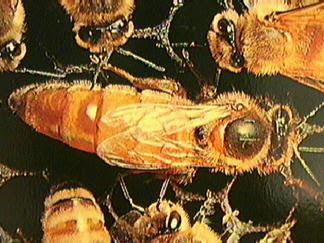On July 7,
alternet.org posted an article about global heating. The title says it all: "The Dark Side of Climate Change: It's Already Too Late, Cap and Trade Is a Scam, and Only the Few Will Survive." I've reached a similar conclusion in recent years, and the evidence continues to mount. In short, we're fucked. But then again, haven't we always been? (I need to update my "Living Without Hope" post. Because
regardless of the outward
circumstances, nothing has changed
ontologically.
Anything existing in the space-time manifold is doomed. It's all temporary, except for whatever lies at the root of all-this. But I digress.)
I've been frustrated about how the climate scientists continue to make projections of future climate without factoring in the
gigatons of Arctic methane now being released into the atmosphere. Methane is a more powerful greenhouse gas than CO2, so the obvious conclusion is that -- in due time -- we will experience out-of-control global heating. Just because we can't yet quantify this effect doesn't mean the climate scientists can ignore it. But they do. Our entire global "
civilization" suffers from the "don't worry, be happy" delusion, and this evidently includes most of the scientists. If we ignore the future, then maybe it will go away, or so goes the delusion. Nobody wants to step forward and be the first to say that we're screwed. Or almost nobody.
Enter 90-year-old James
Lovelock, founder of the
Gaia Theory, which holds that the entire planet serves as a vast organism whose function is to maintain an equilibrium favorable to life. He calls this organism "
Gaia." I remember reading about this in the 70s and thinking wow, how elegant. Back then it was still possible to believe in
Ecotopia, and the
Gaia Theory became a key
underpinning of our living-in-harmony-with-nature philosophy. So I have always held
Lovelock in high regard.
Lately he's been one of the few scientists warning about out-of-control global heating. According to the
Alternet article (written by Alexander
Zaitchik), "In recent years
Lovelock has emerged as the word's leading climate pessimist, raining scorn on the new fashionable
environmentalism and arguing that the time is nigh to accept that a massive culling of the human race is around the corner...
Lovelock, who has been compared to Copernicus and Darwin, years ago arrived at a
disturbingly stark conclusion about Earth's climate future. His prognosis is now starker than ever...
Lovelock believes that we have pushed
Gaia beyond the point of no return...
"
Lovelock examines five dreaded positive feedback loops, those processes now underway that at some point will become ferocious amplifiers of global heating.
Lovelock describes how the most important of these feedback loops already in motion -- the loss of reflective ice cover, the death of carbon eating algae as oceans warm, and methane released by thawing permafrost -- will soon accelerate the heating trend underway, leading to sudden and dramatic shifts in global climate."
In my view, there's no way to say at this point what the outcome will be. I think there's a reasonable chance that our planet will become a second Venus -- too hot for life of any kind.
Lovelock believes -- or professes to believe -- that a remnant of the human race will survive in the far northern hemisphere. I think he's trying to leave his audience with some small shred of hope... if in fact human survival constitutes "hope." The fact is, nobody, including
Lovelock, knows what the final outcome will be. But if we want to indulge in wishful thinking, why not? No harm done. It's gotten us this far, after all.

